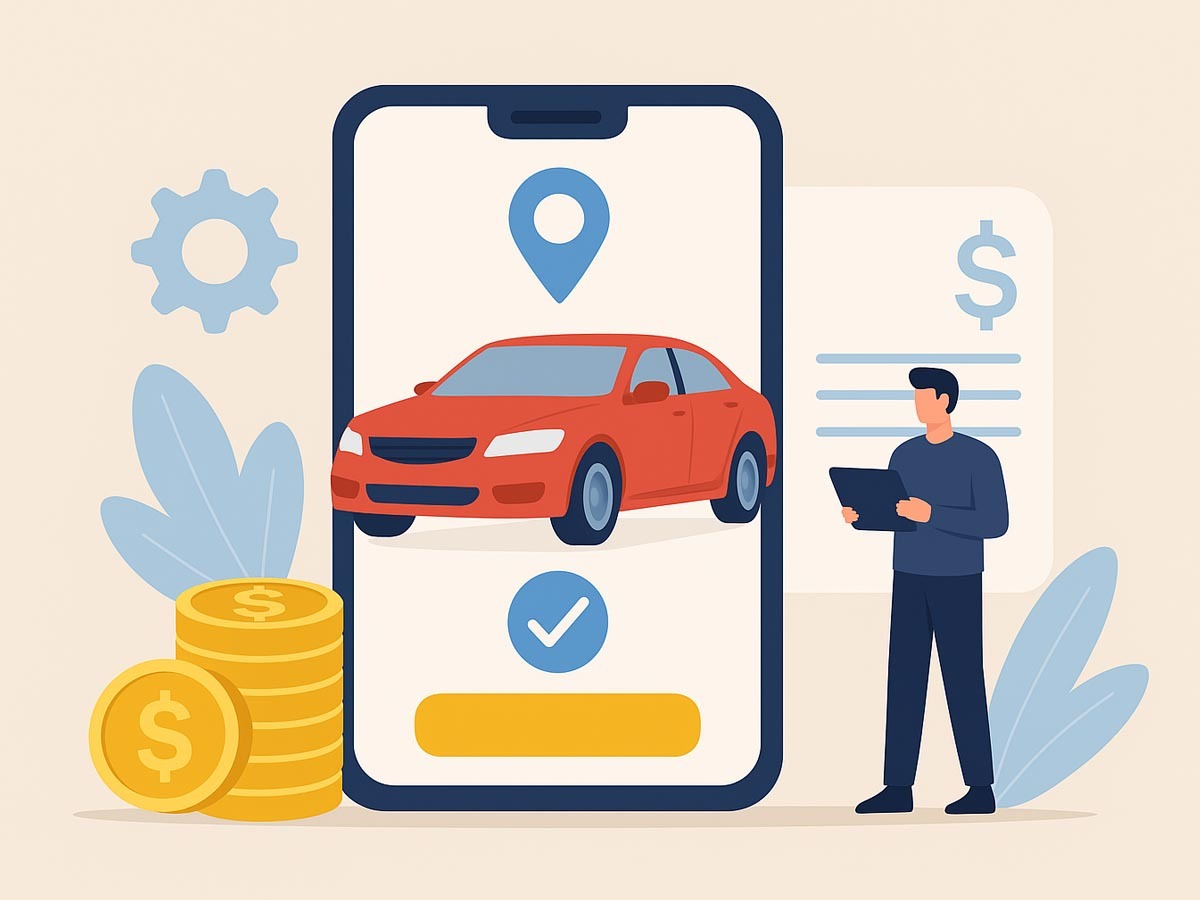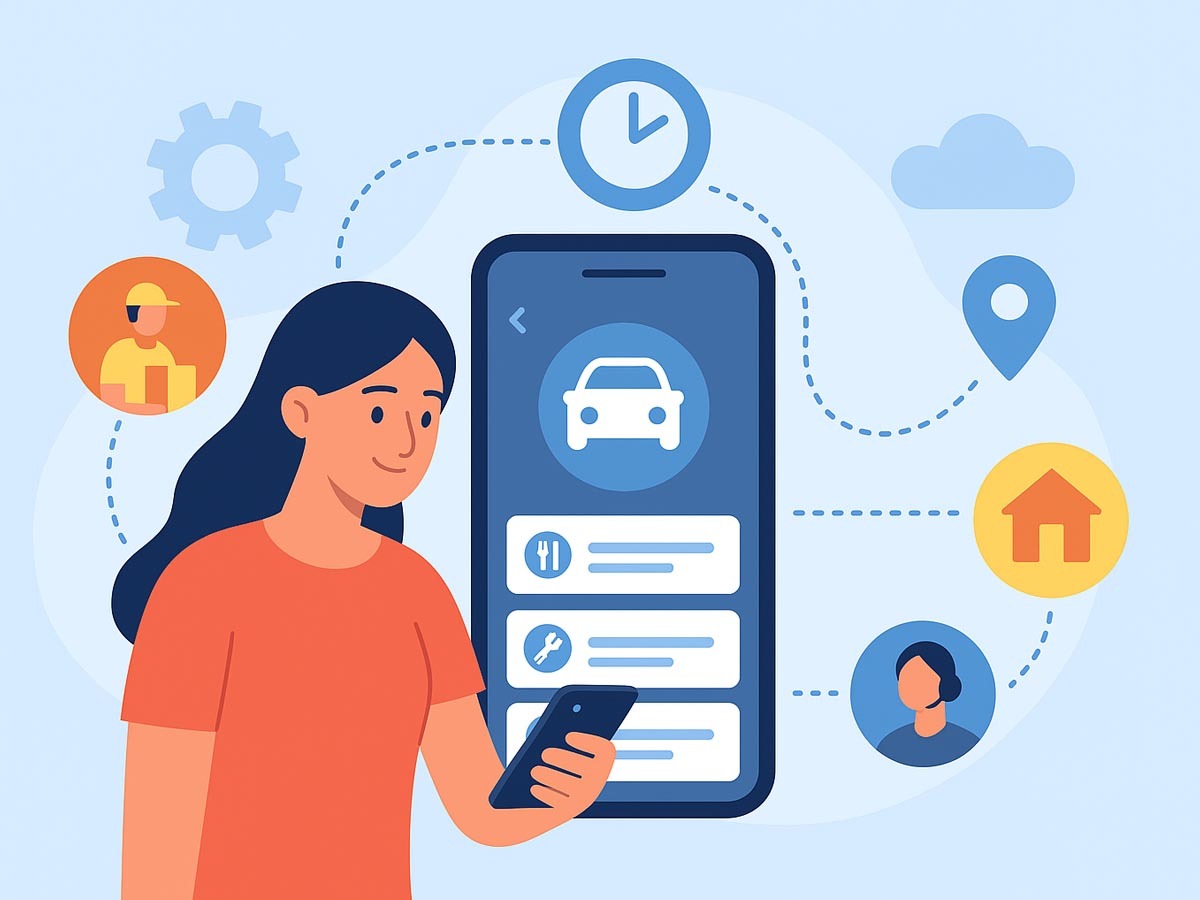Doctor On-Demand: How AI Is Transforming Virtual Healthcare

-
Ankit Patel
- September 18, 2025
- 6 min read
Think back to a time when visiting the doctor meant long waits, crowded hospitals, and rushed consultations. For decades, this was the only option patients had. But the world is changing. People now expect the same convenience from healthcare that they already enjoy in food delivery, online shopping, or ride-hailing. Healthcare is no longer just about treatment—it’s about accessibility, speed, and personalization.
This is where the idea of Doctor on-demand platforms emerged. Imagine a patient tapping a button on their phone at midnight to connect instantly with a doctor about a child’s sudden fever. Imagine an elderly patient in a remote village being able to see a specialist without traveling miles. That’s the promise these platforms hold.
The numbers speak for themselves. The global telemedicine market, valued at $141.19 billion in 2024, is expected to reach $380.33 billion by 2030. Meanwhile, surveys reveal that more than 60% of patients prefer virtual consultations when given the option. This shift is not temporary—it’s a complete transformation in how we think about healthcare delivery.
And at the center of this revolution is Artificial Intelligence (AI). AI isn’t just supporting virtual healthcare—it’s the engine that powers it, making it smarter, more efficient, and more human. This is why Doctor on-demand app development has become such a priority for clinics, hospitals, and healthcare organizations worldwide. They’re not just building apps—they’re creating lifelines that connect patients and providers in real-time.
But what does this transformation really look like? To answer that, we need to step into the patient’s journey and explore how AI is reshaping every moment of care.
◉ The Shift We’ve All Witnessed
The pandemic was the turning point. Overnight, telemedicine became the backbone of healthcare delivery. In the U.S. alone, virtual consultations skyrocketed by 38 times compared to pre-2020 levels. What started as a temporary solution to reduce exposure has now cemented itself as a permanent model of care.
Patients embraced it for its convenience. Providers embraced it for its efficiency. And healthcare organizations recognized it as the only way forward to meet growing demand without collapsing under pressure.
◉ What is Virtual Healthcare?
Before AI came into the picture, virtual healthcare—often called telemedicine or telehealth—was already changing lives. It allowed patients to consult doctors remotely using video calls or mobile apps. This brought several important benefits:
- Convenience: No need to travel or sit in waiting rooms.
- Reduced Costs: Fewer unnecessary ER visits and lower operational costs for hospitals.
- Improved Access: A game-changer for rural areas or underserved communities.
Yet, early telemedicine also had limitations. A typical on-demand doctor appointment app mostly functions as a digital version of a phone call. Doctors could talk to patients, but they didn’t always have access to advanced tools for diagnostics, data analysis, or personalized treatment.
This is where AI entered the scene—taking telemedicine from being a “helpful tool” to becoming a complete healthcare ecosystem.
◉ The Telemedicine Boom: Why Now Is the Time
Virtual healthcare is exploding—and the numbers tell the story. Global telehealth services are projected to grow from $94.14 billion in 2024 to $180.86 billion by 2030, while online doctor consultations have surged from 26 million users in 2017 to over 111 million today. Patients aren’t just trying virtual care—they’re choosing it, with over 60% preferring virtual visits when given the option.
For healthcare providers, this is a signal: digital-first care is the new standard. Telemedicine isn’t a trend—it’s a fundamental shift in how care is delivered, creating the perfect launchpad for AI to transform virtual healthcare.
Read also: Cost Estimation For Doctor Appointment Booking App Like ZocDoc
◉ How AI Is Transforming Virtual Healthcare
AI is turning virtual healthcare from a convenience into a strategic advantage. It powers smarter telemedicine platforms that analyze patient data in real time, predict risks, and personalize care.
AI helps hospitals operate more efficiently, empowers startups to launch innovative doctor-on-demand platforms, and offers investors scalable, high-growth opportunities in digital health.
By connecting telemedicine, remote monitoring, and digital health systems, AI is driving the digital transformation of healthcare, making care faster, safer, and more proactive for patients everywhere.

◉ The AI-Powered Patient Journey: From Symptom to Solution
AI is revolutionizing the way patients move from their first symptoms to receiving treatment. Let’s walk through this journey step by step.
1. Virtual Triage and Chatbots
When a patient first feels unwell, they don’t always know where to start. Should they go to the ER? Schedule a doctor’s visit? Or is self-care enough? AI-powered chatbots step in as the first guide.
These tools ask patients relevant questions about their symptoms, history, and current condition. Based on the answers, the system suggests the right course of action—self-care, a scheduled consultation, or emergency services. This makes AI in virtual healthcare incredibly powerful for reducing pressure on hospitals while helping patients get timely advice.
The benefit is twofold: patients save time, and healthcare staff can focus on cases that truly need human intervention.
2. Intelligent Diagnostics and Decision Support
Once a patient connects with a doctor, AI continues to assist. For example, algorithms analyze lab results, medical history, or even medical images such as X-rays and MRIs. This is where AI in telemedicine proves its worth.
AI can spot patterns or abnormalities in seconds that might take a human doctor much longer to detect. During the pandemic, AI-powered tools helped identify COVID-19 symptoms from chest scans at record speed. Today, these same systems are being applied to detect cancers, heart conditions, and neurological disorders.
The result? Doctors get reliable, data-backed insights that enhance accuracy and reduce misdiagnosis.
3. Personalized Treatment Plans
No two patients are the same. Traditional healthcare often relied on standardized treatments, but AI is pushing us into the era of precision medicine.
By analyzing factors such as genetics, lifestyle, diet, and medical history, AI can design personalized care plans that fit each individual. This is a perfect example of how AI transforms healthcare apps—from generic consultation tools to intelligent platforms that tailor treatments to each patient’s needs.
For patients, it means better results. For providers, it means delivering care that truly feels personal.
◉ Beyond the Consultation: The Broader Impact of AI
AI isn’t just transforming the consultation itself. Its influence extends far beyond, reshaping how healthcare organizations operate and how patients manage their health daily.
1. Remote Patient Monitoring (RPM)
Wearable devices like smartwatches and connected sensors now track vital signs—heart rate, blood sugar, oxygen levels—in real time. When combined with AI, this data becomes a powerful tool.
If something unusual occurs, alerts are sent immediately to doctors or caregivers. This system is especially critical for patients with chronic conditions such as diabetes or hypertension. In this way, AI-powered doctor consultation goes beyond the appointment—it becomes a continuous relationship that helps prevent emergencies before they happen.
2. Administrative Automation
Behind every doctor’s consultation lies a mountain of paperwork: scheduling, billing, coding, and updating medical records. AI steps in to automate these repetitive tasks, freeing doctors to focus on patient care.
This integration of AI in healthcare app development reduces burnout among healthcare workers and improves operational efficiency for clinics and hospitals.
3. Enhanced Patient Engagement
Staying healthy isn’t just about one appointment—it’s about ongoing care. AI tools keep patients engaged by sending personalized reminders for medication, offering educational content, and prompting them to schedule follow-ups.
This is where virtual healthcare with AI becomes more than a service—it becomes a partner in a patient’s health journey. Patients feel supported, and providers see improved treatment adherence.

◉ Trust, Privacy, and Compliance
Of course, none of this progress matters if patients don’t feel their data is safe. Healthcare data is among the most sensitive information, and protecting it is non-negotiable.
That’s why on-demand doctor app solutions must be built with strict compliance in mind. In the U.S., HIPAA laws protect patient privacy, while Europe enforces GDPR for digital rights. Encryption, secure cloud storage, and robust cybersecurity are essential to build patient trust.
For hospitals and clinics, compliance isn’t just about avoiding fines. It’s about proving to patients that their health data is safe in an increasingly digital world.
◉ Challenges and Ethical Considerations
While AI brings immense promise, it also introduces new challenges:
- Digital Divide: Not everyone has smartphones or stable internet access. This limits reach in some regions.
- Algorithmic Bias: If AI is trained on limited datasets, it risks providing unequal care to certain groups.
- Human-AI Balance: Technology should never replace human empathy. Patients need to feel that doctors are still at the center of their care.
- Regulatory Complexity: Laws vary across countries, making it difficult to create global AI-driven telemedicine platforms without clear standards.
These challenges highlight the importance of responsible AI use in healthcare.
◉ The Future of Doctor On-Demand Platforms
The journey doesn’t stop here. Looking ahead, AI-driven telemedicine platforms will become even more advanced.
- Generative AI will allow more natural, empathetic conversations between patients and AI assistants.
- Predictive analytics will help forecast outbreaks or anticipate health risks before symptoms appear.
- Integrated ecosystems will connect electronic health records, pharmacies, labs, and even mental health services into one seamless platform.
The future of doctor on-demand app development lies in building platforms that go beyond simple consultations—they will act as full-scale digital health companions, guiding patients every step of the way.
◉ Wrapping up
The rise of Doctor on-demand platforms marks a turning point in healthcare history. AI is no longer a futuristic concept—it’s here, reshaping how care is delivered, accessed, and experienced.
For patients, it means faster, more personal care. For providers, it means efficiency, reduced burnout, and greater reach. For society, it means a healthcare system that is proactive rather than reactive.
Technology will never replace compassion, but it can amplify it. With AI and virtual healthcare working hand-in-hand, we are entering an era where no patient is left waiting, no condition goes unnoticed, and healthcare truly has no boundaries.
You may also like

How Much Does It Cost to Build a Logistics App Like Aramex?
-
Ankit Patel
The logistics and transportation industry in the Middle East—particularly in the UAE and Saudi Arabia—is undergoing a massive digital transformation. From small courier services to full-scale regional delivery networks, companies are adopting technology to streamline operations, increase efficiency, and deliver superior customer experiences. The transportation business today demands real-time visibility, digital payments, and smart route… Read More

How Much Does It Cost to Build a Car Rental App Like Turo?
-
Ankit Patel
The car rental market has changed rapidly over the past few years. What used to be a traditional service dominated by large rental companies has now shifted toward digital, convenient, and highly accessible on-demand solutions. Today, platforms like Turo have opened the doors for peer-to-peer rentals, giving users the freedom to book cars anytime, anywhere…. Read More

How Multi-Agent AI Systems Are Powering On-Demand Apps
-
Ankit Patel
One AI agent can answer a question. But can it handle the chaos of real-time demand, delivery delays, balance supply, and customer feedback—all happening at once? That’s the challenge behind most on-demand apps today. A single model can automate a process, but it often can’t reason across multiple workflows or adapt to fast-changing conditions. As… Read More






